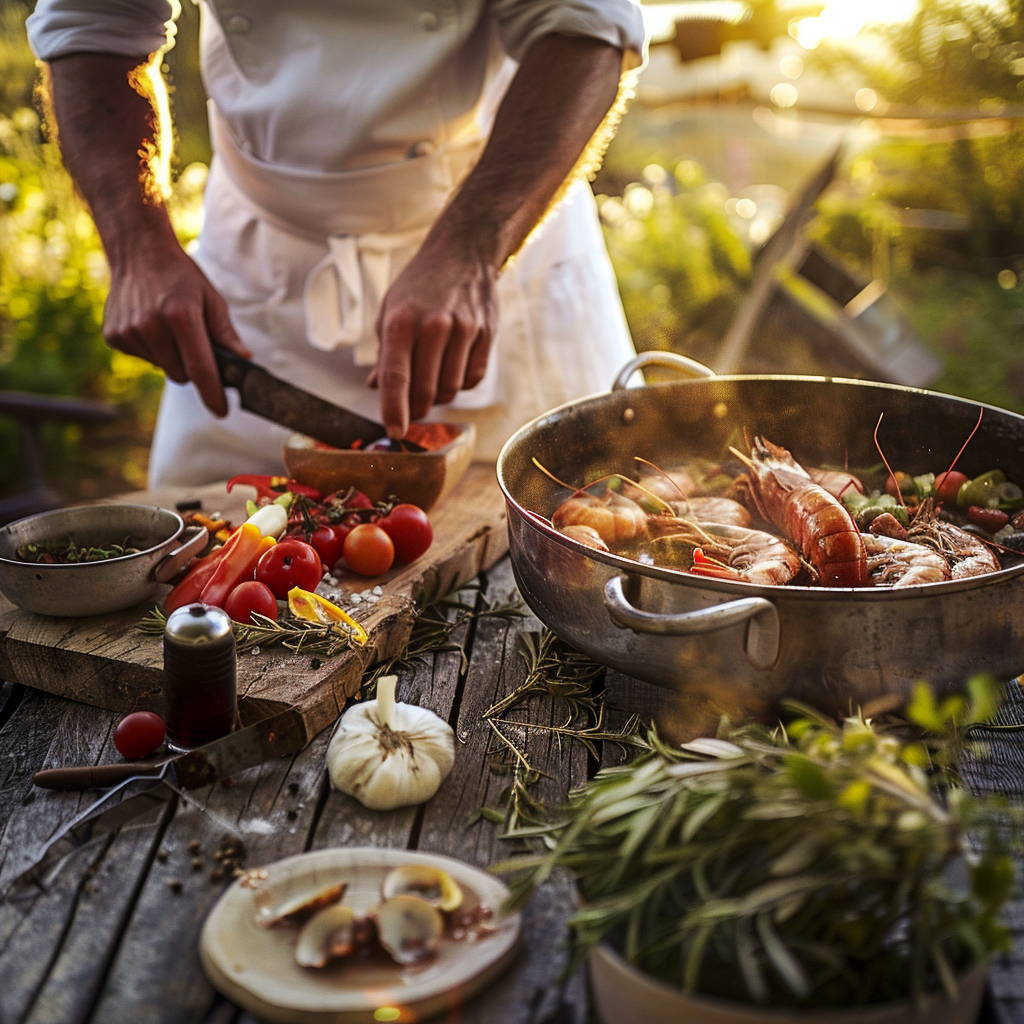You can't go wrong with a Julia Child recipe, can you? The woman who taught America to cook like the French and who was so plain spoken and direct anyone thought themselves able to cook...and therefore did!
That said, as mentioned above, this recipe is pretty "involved" so see below for a recipe that's easy as pie, but still utterly delicious.
Ingredients
- 1 cup minced onions
- 3/4 cup of minced leek, or 1/2 cup more onions
- 1/2 cup olive oil
- 4 cloves mashed garlic
- 1 lb of ripe, red tomatoes roughly chopped, or 1 1/2 cups drained canned tomatoes or 1/2 cup tomato paste
- 2 1/2 quarts water
- 6 parsley springs
- 1 bay leaf
- 1/2 tsp thyme or basil
- 1/2 tsp fennel
- 2 big pinches of saffron
- A 2-inch piece or 1/2 tsp dried orange peel
- 1/2 tsp pepper
- 1 Tb salt (none if clam juice or fish broth is used)
- 3 to 4 pounds fish heads, bones, and trimmings, or 1-quart clam juice, 1 1/2 quarts of water, and no salt (Swedishness suggestion: if you don't happen to have this on hand, use fish broth or "fiskbuljong" just remember to omit salt from the recipe if you use clam juice or fish broth)
- 6 to 8 pounds assorted lean fish, and shellfish if you wish
Instructions
- Cook the onions and leeks slowly in olive oil for 5 minutes or until almost tender but not browned.
- Stir in the garlic and tomatoes. Raise heat to moderate and cook 5 minutes more.
- Add the water, herbs, seasonings, and fish heads, bones, and trimmings to the kettle (or clam juice) and cook uncovered at a moderate boil for 30 to 40 minutes.
- Strain the soup into the saucepan, pressing juices out of ingredients. Correct seasoning, adding a bit more saffron if you feel it necessary.
- You should have 2 1/2 quarts of in a higher, rather narrow kettle.
- Bring the soup to a rapid boil 20 minutes before serving. Add lobsters, crabs, and firm-fleshed fish. Bring quickly back to the boil and boil rapidly for 5 minutes. Add the tender-fleshed fish, the clams, mussels, and scallops. Bring rapidly to the boil again and boil 5 minutes more or until the fish are just tender when pierced with a fork. Do not overcook.
- Immediately lift out the fish and arrange on the platter. Correct seasoning, and pour the soup into the tureen over rounds of French bread. Spoon a ladleful of soup over the fish, and sprinkle parsley over both fish and soup. Serve immediately accompanied by the optional rouille.
Notes
To prepare the fish for cooking, have them cleaned and scaled. Discard the gills. Save heads and trimmings for fish stock. Cut large fish into crosswise slices 2 inches wide. Scrub clams. Scrub and soak the mussels. Wash scallops. If using live crab or lobster, split them just before cooking. remove the sand sack and intestinal tube from lobsters.
